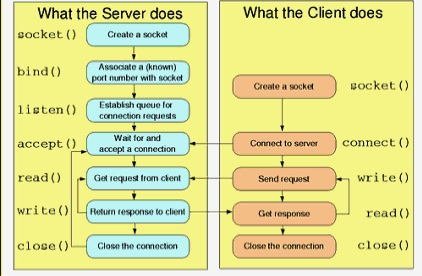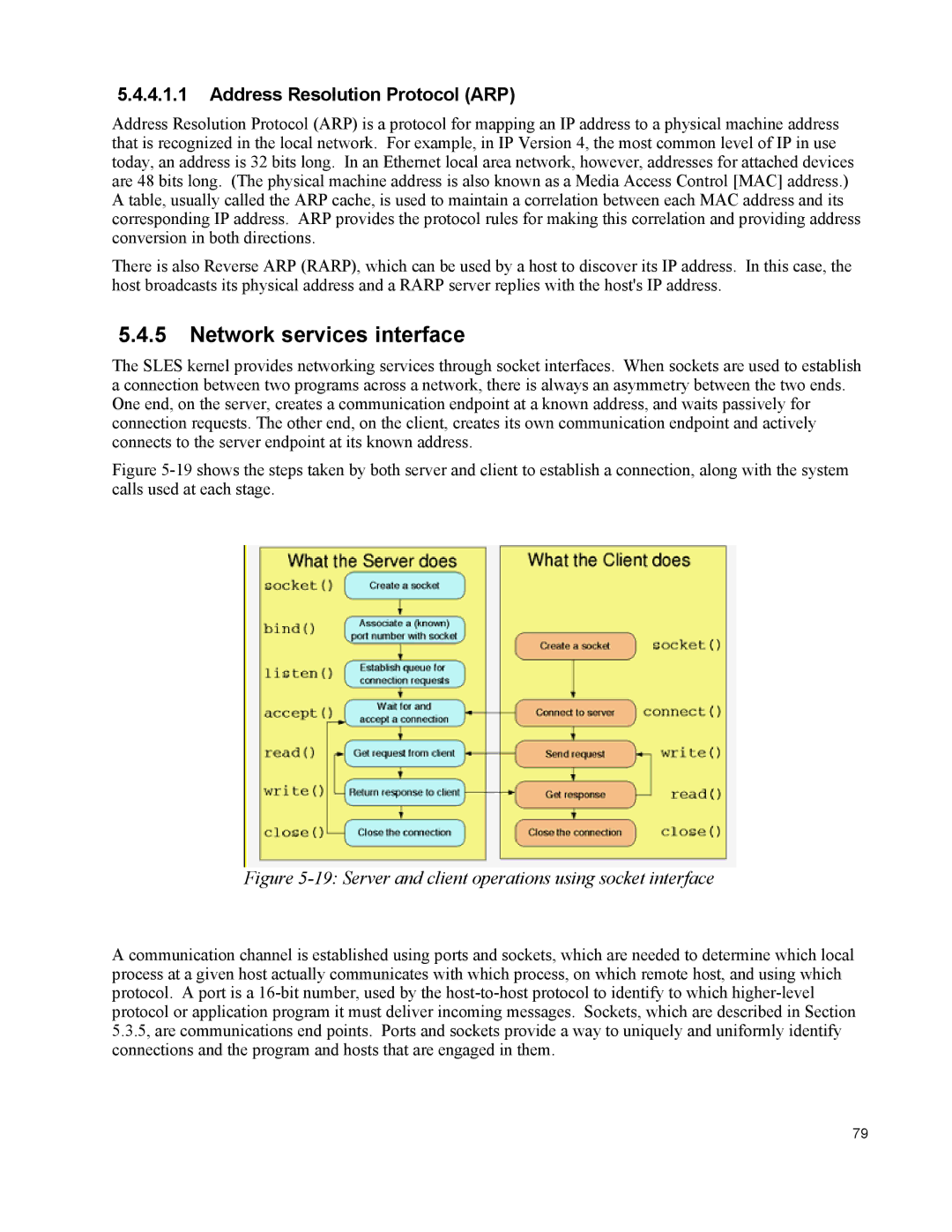
5.4.4.1.1Address Resolution Protocol (ARP)
Address Resolution Protocol (ARP) is a protocol for mapping an IP address to a physical machine address that is recognized in the local network. For example, in IP Version 4, the most common level of IP in use today, an address is 32 bits long. In an Ethernet local area network, however, addresses for attached devices are 48 bits long. (The physical machine address is also known as a Media Access Control [MAC] address.) A table, usually called the ARP cache, is used to maintain a correlation between each MAC address and its corresponding IP address. ARP provides the protocol rules for making this correlation and providing address conversion in both directions.
There is also Reverse ARP (RARP), which can be used by a host to discover its IP address. In this case, the host broadcasts its physical address and a RARP server replies with the host's IP address.
5.4.5Network services interface
The SLES kernel provides networking services through socket interfaces. When sockets are used to establish a connection between two programs across a network, there is always an asymmetry between the two ends. One end, on the server, creates a communication endpoint at a known address, and waits passively for connection requests. The other end, on the client, creates its own communication endpoint and actively connects to the server endpoint at its known address.
Figure 5-19 shows the steps taken by both server and client to establish a connection, along with the system calls used at each stage.
Figure 5-19: Server and client operations using socket interface
A communication channel is established using ports and sockets, which are needed to determine which local process at a given host actually communicates with which process, on which remote host, and using which protocol. A port is a
79
